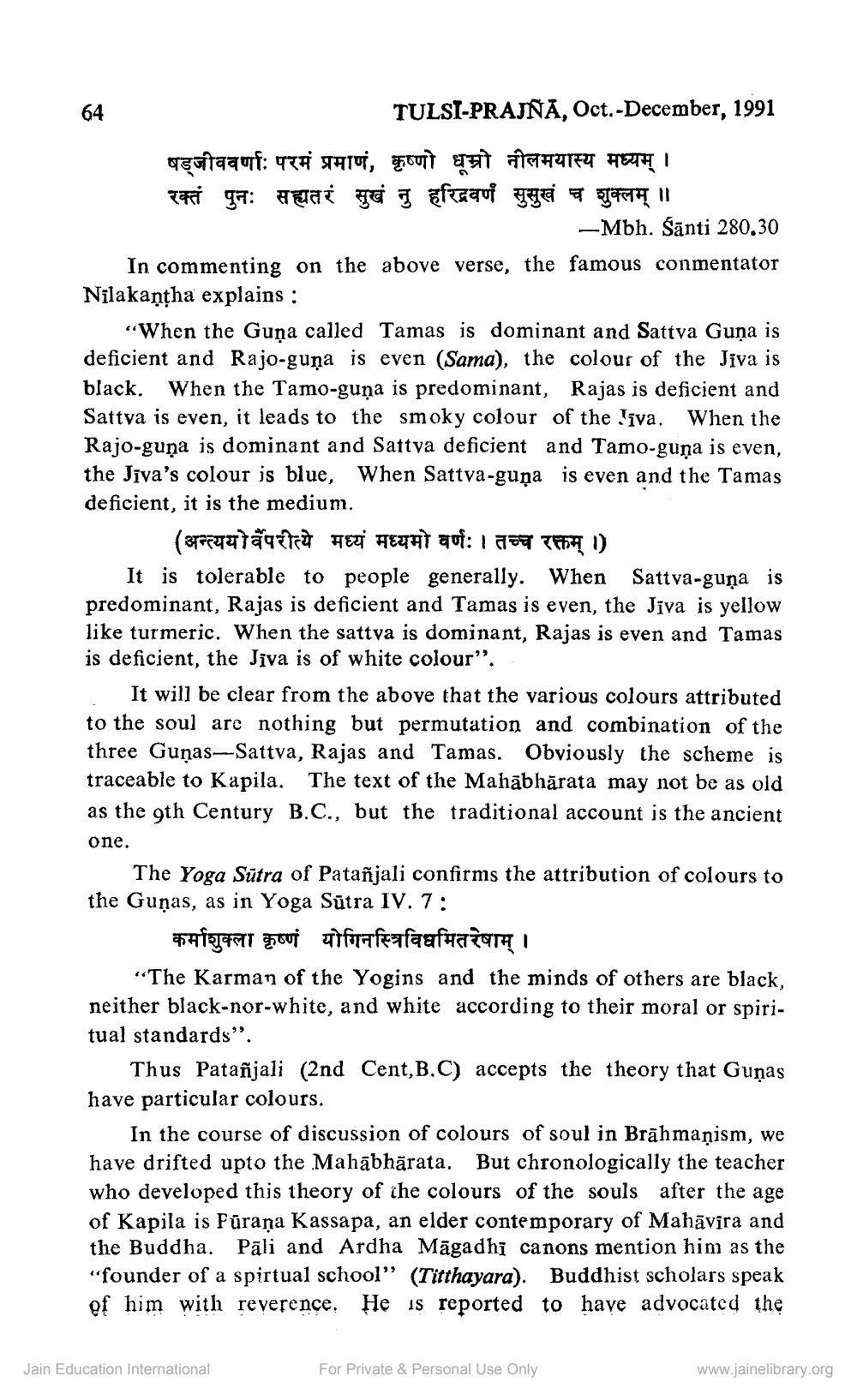________________
64
TULSI-PRAJÑA, Oct. -December, 1991
षड्जीववर्णाः परमं प्रमाणं, कृष्णो धूम्रो नीलमयास्य मध्यम् । रक्तं पुनः सह्यतरं सुखं नु हरिद्रवर्णं सुसुखं च शुक्लम् ॥
In commenting on the above verse, the famous conmentator Nilakantha explains:
-Mbh. Santi 280.30
"When the Guna called Tamas is dominant and Sattva Guna is deficient and Rajo-guna is even (Sama), the colour of the Jiva is black. When the Tamo-guna is predominant, Rajas is deficient and Sattva is even, it leads to the smoky colour of the Jiva. When the Rajo-guna is dominant and Sattva deficient and Tamo-guna is even, the Jiva's colour is blue, When Sattva-guna is even and the Tamas deficient, it is the medium.
( अन्त्ययो वैपरीत्ये मध्यं मध्यमो वर्णः । तच्च रक्तम् ।)
It is tolerable to people generally. When Sattva-guna is predominant, Rajas is deficient and Tamas is even, the Jiva is yellow like turmeric. When the sattva is dominant, Rajas is even and Tamas is deficient, the Jiva is of white colour".
It will be clear from the above that the various colours attributed to the soul are nothing but permutation and combination of the three Gunas-Sattva, Rajas and Tamas. Obviously the scheme is traceable to Kapila. The text of the Mahabharata may not be as old as the 9th Century B.C., but the traditional account is the ancient
one.
The Yoga Sutra of Patañjali confirms the attribution of colours to the Gunas, as in Yoga Sutra IV. 7:
nig41 Hovi aifnafeafaafnazarą |
"The Karman of the Yogins and the minds of others are black, neither black-nor-white, and white according to their moral or spiritual standards".
Jain Education International
Thus Patanjali (2nd Cent, B.C) accepts the theory that Gunas have particular colours.
In the course of discussion of colours of soul in Brāhmaṇism, we have drifted upto the Mahābhārata. But chronologically the teacher who developed this theory of the colours of the souls after the age of Kapila is Fūraṇa Kassapa, an elder contemporary of Mahavira and the Buddha. Pāli and Ardha Māgadhi canons mention him as the "founder of a spirtual school" (Titthayara). Buddhist scholars speak of him with reverence. He is reported to have advocated the
For Private & Personal Use Only
www.jainelibrary.org




